Writer: Grant Morrison
Penciller: Rags Morales
Inker: Rick Bryant
Colourist: Brad Anderson
Letterer: Patrick Brosseau
Cover: Rags Morales and Brad Anderson; Jim Lee, Scott Williams and Alex Sinclair (variant)
Publisher: DC Comics
Last week the second wave of DC’s New 52 hit shelves, among them the first issue of the relaunched Action Comics as penned by star writer Grant Morrison. This week we’re taking a look at the first issue of DC’s most renowned series.
The Road So Far…
Action Comics #1 is part of the DC 52 relaunch, placing the “Man of Steel” in his early days as a superhero in Metropolis. Considered “Year Zer0” by DC co-publisher Dan Didio, Action Comics offers one of three takes on the Superman character, running alongside stories from different eras as told in Justice League and Superman.
What’s the Story?
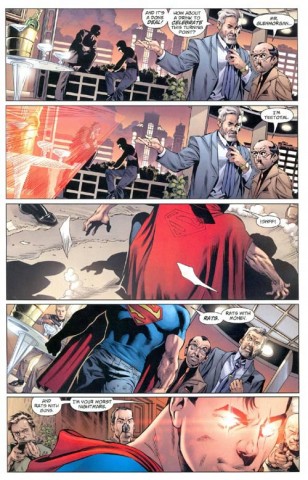
High on a rooftop amid the towering Metropolis skyline, a crooked business man named Mr. Glenmorgan is paid a visit by the “Superman.” The Kryptonian hero takes him and holds him high above his head with one arm as the Metropolis police department makes their way to the rooftop to stop him, ordering Superman to put Glenmorgan down. In defiance he steps off the edge of the skyscraper and drops him, hurling down to the city streets far below in quick pursuit. Catching him before he hits the ground, Glenmorgan admits to his crimes once caught, scared witless as the police arrive on the streets and demand Superman desist. He again defies the authorities and speeds off, proclaiming “catch me if you can” as he speeds away. Deep in a hideaway, Lex Luthor and General Lane discuss the arrival of Superman, specifically how they can stop him. They continue to watch a live feed of a tenement building primed for demolition, one with families still residing inside. Thankfully close by, Superman interjects and prevents a wrecking ball from destroying the building, saving every citizen in the process. After telling them to leave quickly, Superman is confronted by a squad of street tanks which attempt to apprehend him. After a failed attempt, Superman grabs the same wrecking ball from the construction equipment and destroys one of the tanks. With the soldiers looking on from inside the other vehicle, the apartment dwellers gather around Superman to protect him, allowing him to get away easily. He arrives back to the rooftop of his apartment building and quickly changes into his “Clark Kent” clothes, running into his landlord as he makes his way down from the roof. He pays his rent, and continues into his room to call in a story to his editor. He instead calls his best friend Jimmy Olson, who’s with Lois Lane, and warns him not to board any trains as they’re wired not to stop. Lane, in search of her story, brushes off the advice and continues onto the train which begins to pick up speed without a hint of an imminent stop. Superman arrives and stops the train, which pins him up against a building much to the delight of Lex Luthor.
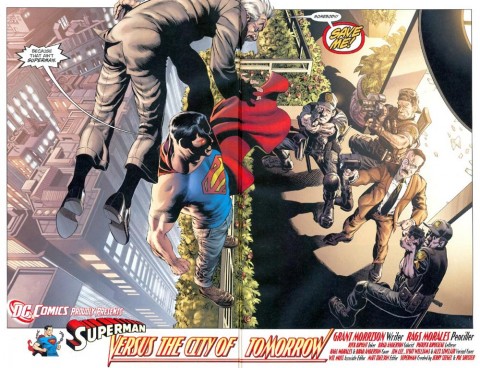
Upon discovering Action Comics was to function as “Year Zero” for Superman, I wasn’t quite sure what to make of the distinction or what it could mean for the types of stories that could be told. With the possibility of it simply being another origin story, instead Morrison’s book places us six months after Superman’s arrival in Metropolis. Clearly on the wrong side of the law in the eyes of the authorities, Morrison’s story defines Clark Kent/Superman as someone who contrasts the corruption of modern society with his own ideals of right and wrong. I enjoyed Morrison’s ultra-vigilante take on the character, which spliced in very rudimentary but effective heroic elements that recall classic superhero tales of simple acts of crime fighting such as catching crooks and saving lives from certain danger. It’s a far cry from the epic-scope of modern superhero stories which typically pit the hero against a world threatening antagonist, and more attune to the Smallville television series . This issue was particularly well paced, noting its storytelling elements which allowed the plot to be told without feeling overwhelmed with the weight of the relaunch. Considering some of the other titles released thus far reek of editorial mandating, Morrison was able to tell a story which avoids that pitfall, helping making it a very successful first issue that enables its accessibility to new readers, while still succeeding as a retro-superhero tale for older readers.
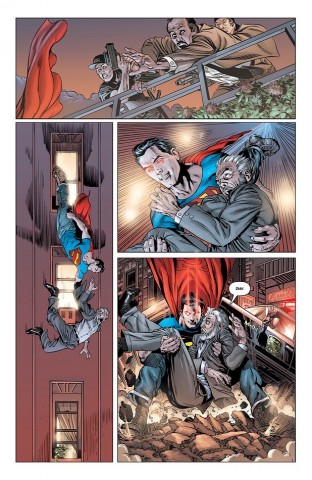
The Pretty, Pretty Pictures
I enjoyed much of Morales’ work in this issue. I feel like the first page of the book was a nice way to introduce the character visually, opting to use two identical panels in the beginning of the story, their dissimilarity being a streak of red across the left side of the second panel. In the proceeding panels on the page, Morales drew Superman crouching with only his cape visible, his back to Glenmorgan and his associate; quickly he stands up and turns towards them, his eyes burning red. The following pages were also nicely done, depicting the cops’ arrival to the rooftop where they find Superman holding Glenmorgan high above his head, pleading to the officers to save him. The artwork takes snapshots of the scene, displaying Glenmorgan screaming for his life, the cops pointing their guns at Superman, and then Supes smiling defiantly at them before taking a step backwards off the building’s ledge. The Glenmorgan portion of the story ends as the cops try to grasp at Superman’s cape, while Clark flies down to save Glenmorgan from death, catching him at the last moment and then landing on the ground. Morales did a great job of adding personality to the scenes, whether it’s adding shadows to the buildings as they hurtled towards the ground, the blurring of surroundings as they speed to their destination and finally once they hit the ground, the road below is destroyed under the impact of Superman’s strength. Morales’ work is impeccable throughout the issue, offering some high-grade work from beginning to end. The entire train sequence towards the end of the issue was nicely done, displaying Clark at the front of the train causing it to crumple. The pages then look at three different viewpoints of the events; from an office building as the train hurtles towards the building’s windows, from outside the train as it crashes through the window and disrupts their work day, and then inside the train as Jimmy and Lois hold on for dear life. Every page of the issue is well done and expertly coloured by Anderson. Some of Morales’ character faces are a little rough or strange, but it’s a small sticking point for artwork that is otherwise fantastic.
Final Thoughts
Although the relaunch offers plenty of opportunities for books to fall flat, Action Comics succeeds in providing a solid reading experience that is nicely complemented by outstanding artwork. Of the three books I’ve read from the relaunch, Action Comics is easily the best, which considering this is one of the flagship books, it’s surely a good sign that this book is off to a good start.

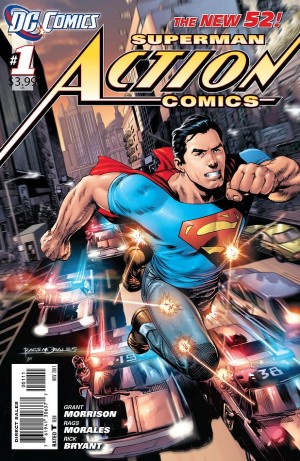
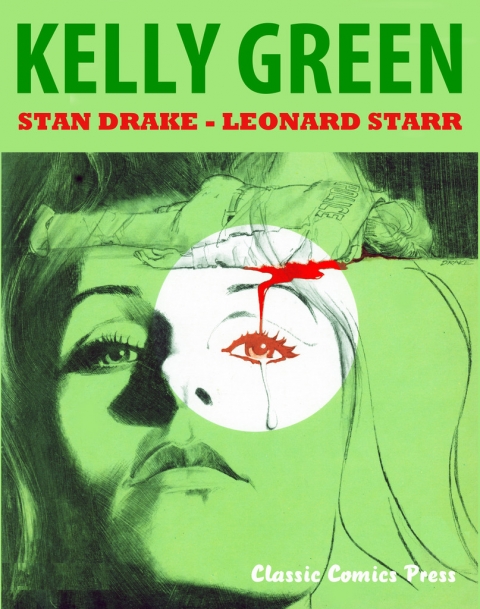
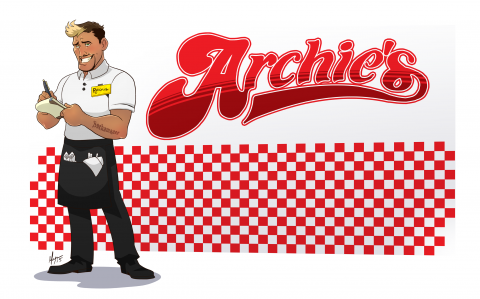
So, wait, the timeline is different for the Superman in JLA and Superman titles? As in they are before or after what happens in Action? Good job DC. Very accessible for fans.
The thing that is nagging at me with Action Comics #1 is what Superman is wearing. I grew up on a farm. But if I moved to the big city to become a superhero, I wouldn’t be wearing my old work books, worn out jeans and a T shirt. I would try to look bad-ass.
The look of Superman has that Smallville feel to it. The TV show had Clark wearing his normal clothes trying to fight crime. At least season 9 saw a new outfit. Something a vigilante would wear.
The artwork does look awesome in the book. It should be good as a trade.
I just want to know where Supes got a pair of bullet-proof Levis.
I believe he soaks them in his own urine to give his jeans that “super” quality.
That is gross.
Maybe they’re Kryptonian blue jeans. You can pick them up at any Krypton Gap in Candor City.
The GA Superman had an outfit made from his Kryptonian blankets and that was invulnerable. The Byrne revamp changed that, but claimed Superman possessed a 1/2 inch ‘aura’ around his person which also made his clothing invulnerable and kept them clean, which is why his cape was always getting torn and destroyed… the Morrison version has the Kryptonian blanket as a cape, but given the way his clothes survive the damage he goes through, I gather that something of the Byrne aura remains.
Awesome use of nerd-lore Kev. I love this site.
Cool piece Andrew. It does look like one of the more ‘satisfying’ books from the N52 (though I haven’t read it myself yet).
I thought the art in the new Mister Terrific, today was also quite strong… shame I can’t say the same for Green Lantern #1…
Johns’ deserves a higher calibre of art to carry his attitudy character beats I think.
I would much rather this Gugliotta chap (or anyone else!) worked on Lantern… sorry Doug, must try harder 🙁
Wow…okay, here goes.
Anthony: That’s how it was explained during the DC New 52 panel at Fan Expo. “Action Comics” is considered “year zero,” “Superman” is “year one” and “Justice League” is “year five.” The words come from Dan Didio himself.
Ed: I agree, the costume is much too similar to the “Smallville” costume their Clark wore, sans the cape obviously. When I first saw it I joked that I could put on my blue Superman t-shirt, jeans and wear my red flag as a cape and run around pretending to be Superman. It’s almost too simplistic.
Danny: Thank you, sir.
Ok. But explaining it a con panel doesn’t really help making it accessible for new fans, which is, I presume, at least part of the reason for the reboot. What’s the over/under on when DC is going to switch back to old numbers/continuity?
That’s what the girl in the cloak is for — she’s the escape hatch if the relaunch tanks, and if it doesn’t she’s the catalyst for the first event.
Action is year 0, Justice League is one year later (for the first six issues then it jumps to the current day which is year five), and Superman is set in the same now as the other DC books.
If it takes explaining, especially outside of the comic book, then it missed the mark for new readers.
Ball. Drop.
25 issues
I would argue that there’s no explanation to give. You ask when will it all revert back? And the official answer is never. We can only surmise that they have backup plans if this is an epic fail.
They’ve said in they’re promotional materials all of the comics are set in a now that’s five years after the debut of Superman and Batman. It’s only Action Comics and Justice League that are long flashbacks to establish the most extreme changes – Action is the start of superheroes and Justice League is when they first interact and we see the larger universe unfolding. But I would argue that the point of intriguing readers is to get them to try and figure out how this all fits together – and that’s where this truly is an epic fail.
The DCnU relies on your familiarity with these characters and their shared histories in order for you to appreciate them, but they’ve played with that to the point where none of those histories can be accepted as being correct. In Justice League, Batman and Green Lantern meet for the first time – but who are Batman and Green Lantern? There’s no origin recap, they just get thrown together.
I was discussing this with a retailer the other day – what the DCnU is missing are “zero issues” – primers that set up the premise and the origins of the characters for new readers.
So I got them mixed up? I’m already losing interest. I’m presuming the rest of the DCU will sync up at some point regardless.
Anthony, Ed: That’s obviously what the girl in the cloak (who isn’t Iris) is for. I imagine we’ll definitely see it by the time Action would have hit 1000 issues, because that’s a milestone you don’t pass up.
I also have been thinking, why 52? It could have just as easily been 50 or 60 or whatever. But why exactly 52? They already had the 52 series, so maybe the number has some significance?
I actually think (for what It’s worth) that the DC ‘ball’ is well and truly secure for the first time in a long time.
They won’t/can’t revert back from this… The value and purity of a move as bold and daring as this – is far greater than… the 1000th issue of anything. The whole point of this reboot was to bring in new readers – and it’s worked handsomely.
The DC past has no place in the future from this point (in terms of story or relevance inside the fiction or numbering). The creators should be remembered/respected/commended for the work and – it’s obviously relevant in a sense that, It WAS the DCU. However, a clear line has been drawn in the DC sand between now and ‘the old days’ AKA ‘a few weeks ago’.
I quite like the idea of telling stories 5 years down the line – or… investing in a new story that DOES have a past imbedded already, it just gives the new scenes a bit more weight – It also suggests that there’s a fairly solid plan in place for the foreseeable future. If ACTION needs to catch up to JUSTICE LEAGUE (or Justice League in a few issues time at least), this is quite a handy story-telling device – one that could be used to great effect if… (for example) in a years’ time we see Supes in ACTION, in a fight with the creature from JL#1 – causing damage to the bridge with “some kind of fire” (Lantern points out to Bats).
Starting just after the ‘beginning’ is refreshing – and also means they have Origin stories in their ‘tool-box’ for future books.
Also, not making the sweeping story structure obvious to readers from the outset WITHIN the comics themselves is smart, as it encourages readers to investigate on their own, ask questions and argue online 😉 all adding to the buzz.
I don’t think a new DCU will rely on “familiarity with the characters and their shared histories” in order for us to appreciate them, quite the contrary… and none of those histories ARE ‘correct’ anymore… they’re simply that… history.
These first books ARE the “zero issues”… they just start at a relevant point-in-story – and, can slow down to reveal the ‘how’ and ‘why’ when the new market settles down.
Jim Lee suggests that the number 52 has little to hide in the podcasts recorded at San Diego…
http://www.dccomics.com/downloads/?action=podcast
“New 52” just sounds cool.
Seeing as I like to make future bets this seems like a perfect opportunity. Danny, shall we make a gentlemen’s wager, a pint perhaps? If Action reverts back to issue 1000 (or sooner) I win. But if DC actually passes up a chance to do something with what would technically be issue 1000 you win.
Anthony, you’re on mate, I’ll take that bet on principle alone. I like to think that DC (or anyone involved in publishing comics) will always operate with a “quality not quantity” mind-set, always publishing the best stories possible – and if those ‘best’ stories reach 1000 issues without the need to refresh or reboot then… hats off. But if readers walk away because the story-telling is poor, then no-one will even be around to see the milestone issues. You can do anything 1000 times… but can you do it better than everyone else?
That said, it’s naïve to think they won’t acknowledge the 1000th issue somehow… never the less… 1 English pint and bragging rights.
On.
It is on like Donkey Kong. I also assume that by that time CBD will have grown enough that I can just visit you in our London office.
Which (of course) I’ll be heading up… perfect! 🙂 Consider this my digital handshake.